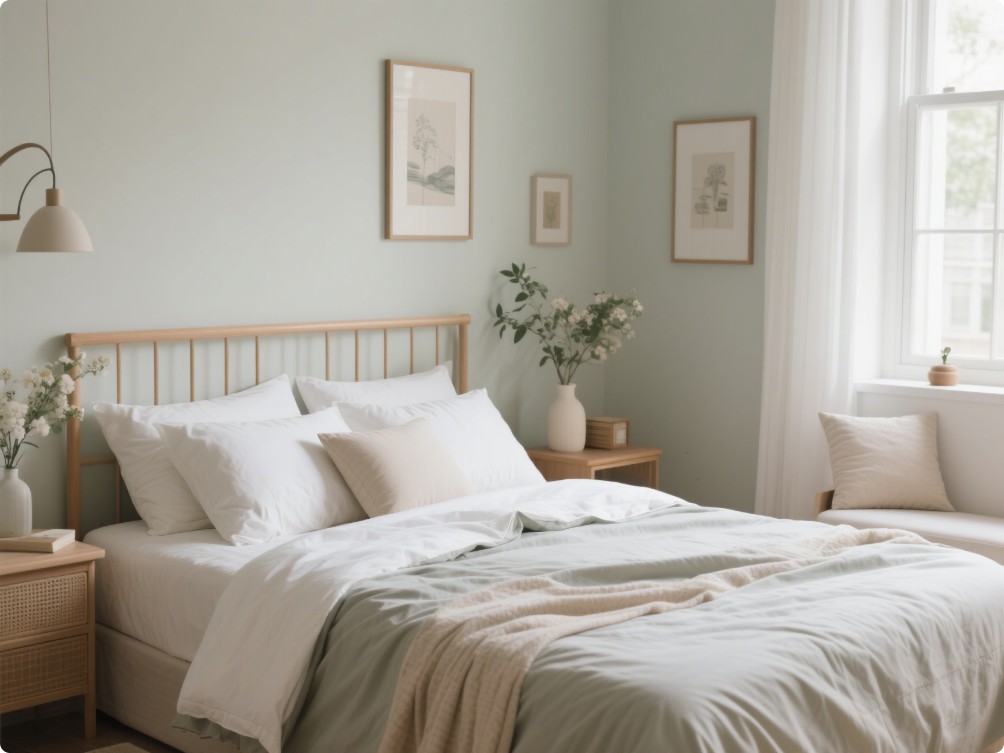When Nora inherited the old townhouse at the end of Willow Lane, she saw not the peeling paint or the worn floorboards, but a canvas. A place where every room could tell a story — not in loud shouts, but in quiet sighs. She set about creating a home, knowing that it wasn’t only the walls or the furniture that would matter. The true soul of a room, she thought, was written in the softness of the bed, the way the sheets fell, the colors that whispered from the pillows at dusk.
In her minimalist bedroom, Nora let the light lead. The walls were pale, almost mist-like, and the floor bare except for a single woven rug. Her bed wore simple, monochromatic sheets — crisp, clean, and pure. The covers were soft in texture but firm in their silence, aligning with the spirit of restraint that filled the space. In this room, nothing begged for attention; everything simply existed in calm balance. The bed became an extension of the room’s stillness, offering rest not just to the body but to the senses.
But Nora loved moods, and moods could change. In the sunniest guest room, she let her heart drift toward the romance of French style. Here, the walls were a soft cream, touched with intricate moldings. The bed became a stage for subtle drama — linen sheets in muted pastels, a delicate throw stitched with old-world patterns, pillowcases edged with barely-there lace. Everything was slightly rumpled, as if kissed by afternoon breezes. The bedding danced between elegance and comfort, never stiff or overly precious. It told stories of slow mornings, croissants, and windows thrown wide to blue skies.

In the little attic bedroom, Nora decided to embrace the countryside spirit — the dream of a pastoral life that tugged at her whenever she smelled fresh rain. The walls wore faded floral wallpaper, and the bed welcomed cheerful, earthy linens. Soft checks, tiny blooms, warm neutrals, and a handwoven quilt at the foot gave the room its breathing, living charm. The bedding wasn’t carefully matched but lovingly layered, as if collected over years. Here, comfort wasn’t a design but a feeling — a bed that looked as though it had just been left by someone laughing, dreaming, living.
Lastly, in the quiet corner room that faced the garden, Nora found herself drawn to the tranquil precision of Japanese style. She chose a low wooden bed, close to the ground, framed by nothing but space and light. The bedding was an exercise in thoughtful simplicity: muted earth tones, soft natural textures, and a single cotton futon cover, carefully folded at the edges. The bed and the room bowed to each other in respect, each element mindful, each fold intentional. Lying there, Nora felt herself breathe differently — slower, deeper, as if the room itself were teaching her how to exist in the moment.
As the seasons turned and days drifted by, Nora would wander from room to room, each one a different dream. She realized that bedding was not just about patterns and fabrics. It was about feeling — about capturing the essence of a space and giving it a heartbeat. Minimalism spoke in clean lines and quiet comfort; French romance fluttered with delicate whimsy; countryside dreams grew wild and full of life; Japanese serenity whispered with stillness and care.
Each night, as Nora slipped between the sheets of whatever room she chose, she felt herself slipping into a different world — all held together by the simple, extraordinary magic of a well-dressed bed.
